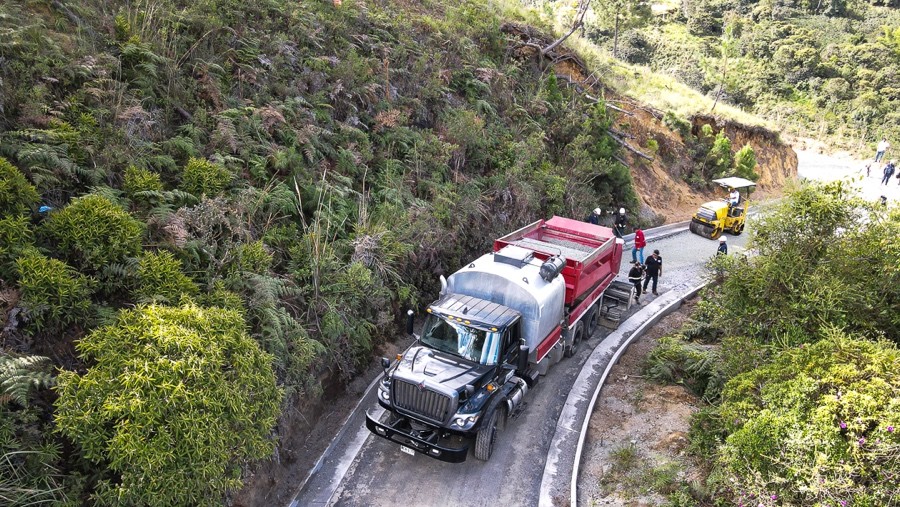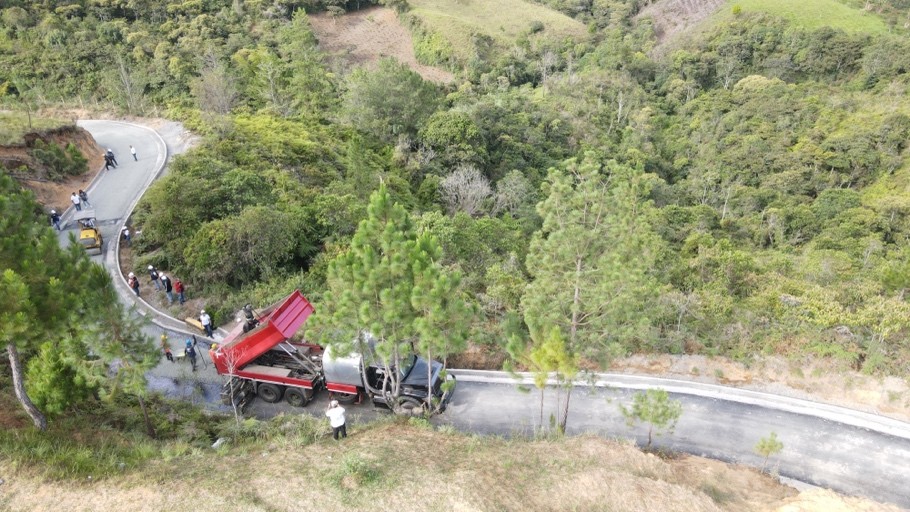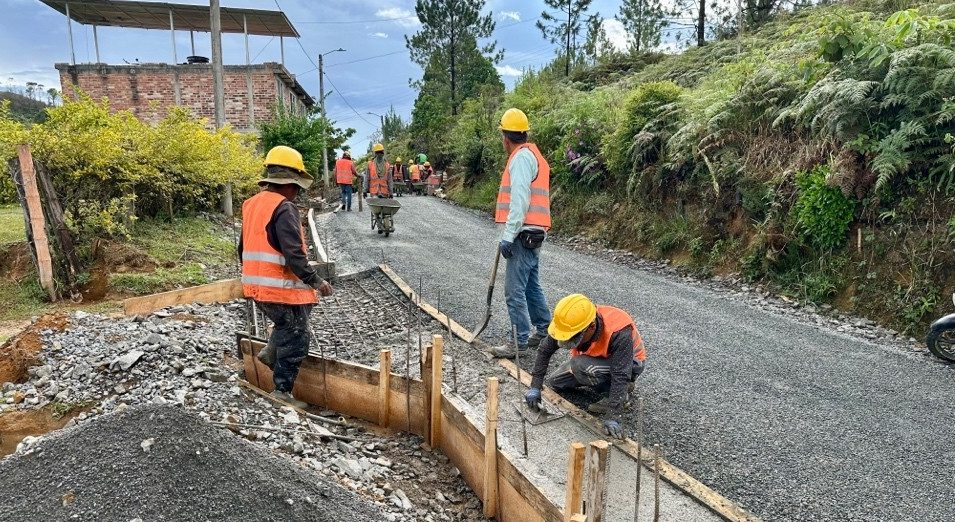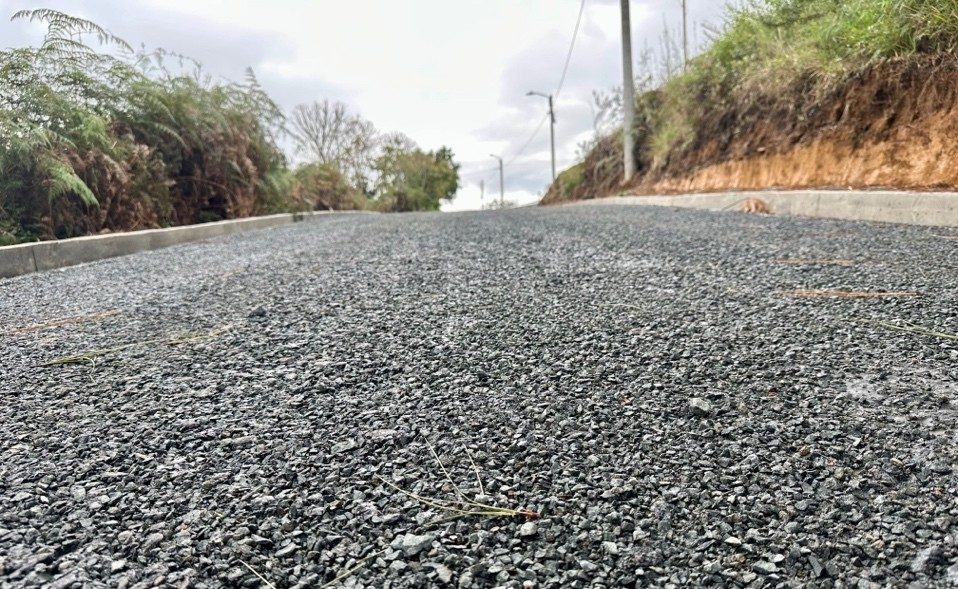News
Test section of the CDT Vial advances: a commitment to transforming rural roads in Cauca
The Technological Development Center for Innovation in Road Infrastructure of Cauca (CDT Vial), a project led by the University of Cauca, is moving forward with the implementation of an experimental section that evaluates new technologies for improving tertiary roads in the department.
This pioneering initiative is consolidating itself as one of the most significant milestones of the project, funded by the General Royalties System (SGR) and supported by the Royal Institute of Technology of Sweden – KTH, the Government of Cauca, and strategic private sector partners.
Since 2021, CDT Vial has been driving an innovation strategy aimed at strengthening the technical and scientific capacity of rural road infrastructure, directly benefiting 37 municipalities in the department. As part of this vision, a 1-kilometer pilot section is currently under construction, located between the villages of San Rafael – Morinda – Santa Rosa – La Tetilla – La Meseta, in the rural area of Popayán.

Provided photo
What is this section for?
The test section aims to evaluate, under real conditions, the technical, environmental, and economic performance of non-conventional materials applied to rural roads. Its design makes it possible to analyze different pavement configurations and construction techniques, in order to establish replicable models that optimize resources, reduce maintenance costs, and improve road connectivity in the region.
This development is carried out under the triple helix cooperation model (Academia – State – Industry), integrating university knowledge, public management, and the support of companies such as PAVCO WAVIN, COLBITUMEN SAS, BITUVIAL SAS, and the Álvaro Vásquez quarry.

Provided photo
Applied technologies
Among the materials and methods implemented in the section are:
- Geocells: three-dimensional structures for soil stabilization.
- Ecobase with C&D waste: granular base made from construction and demolition residues.
- Double surface treatment with CRM: asphalt mix modified with recycled crumb rubber.
- Geotextiles, SR-type signage, and metal guardrails.
These solutions were supplied or co-financed by project partners, enabling innovation with efficiency and sustainability.

Provided photo
Section-by-section intervention
The pilot section was divided into three subsections, each with specific configurations allowing for comparison and performance analysis of the applied technologies.
To date, the three subsections have advanced significantly with activities such as excavations, installation of sub-base layers, incorporation of geocells and Ecobase with C&D waste, as well as the application of asphalt modified with recycled crumb rubber (CRM). These processes have been accompanied by field tests using cutting-edge equipment such as the GeoGauge and the Lightweight Deflectometer (LWD), acquired by CDT Vial to accurately assess soil stiffness and pavement structural capacity.
The intervention, with an estimated value of 871 million pesos, has been made possible thanks to the collaborative model with private sector partners, who provided materials at production cost or as technical donations, optimizing expenses without compromising quality.

Provided photo
This test section not only represents a physical solution to rural connectivity needs but also consolidates itself as a living laboratory of applied knowledge. Its results will be key to informing decision-making in road infrastructure at both departmental and national levels. Through this pilot, CDT Vial seeks to:
- Validate innovative construction methodologies.
- Optimize the use of materials available in the territory.
- Reduce long-term maintenance costs.
- Minimize the environmental impact of roadworks.
- Contribute to the formulation of technical guidelines in coordination with entities such as INVÍAS.
This development represents a firm step toward closing the connectivity gap in the rural areas of Cauca, backed by scientific knowledge, sustainability, and institutional commitment.
Written by: Alejandra Holguín Granada – Communications, CDT Vial Project


